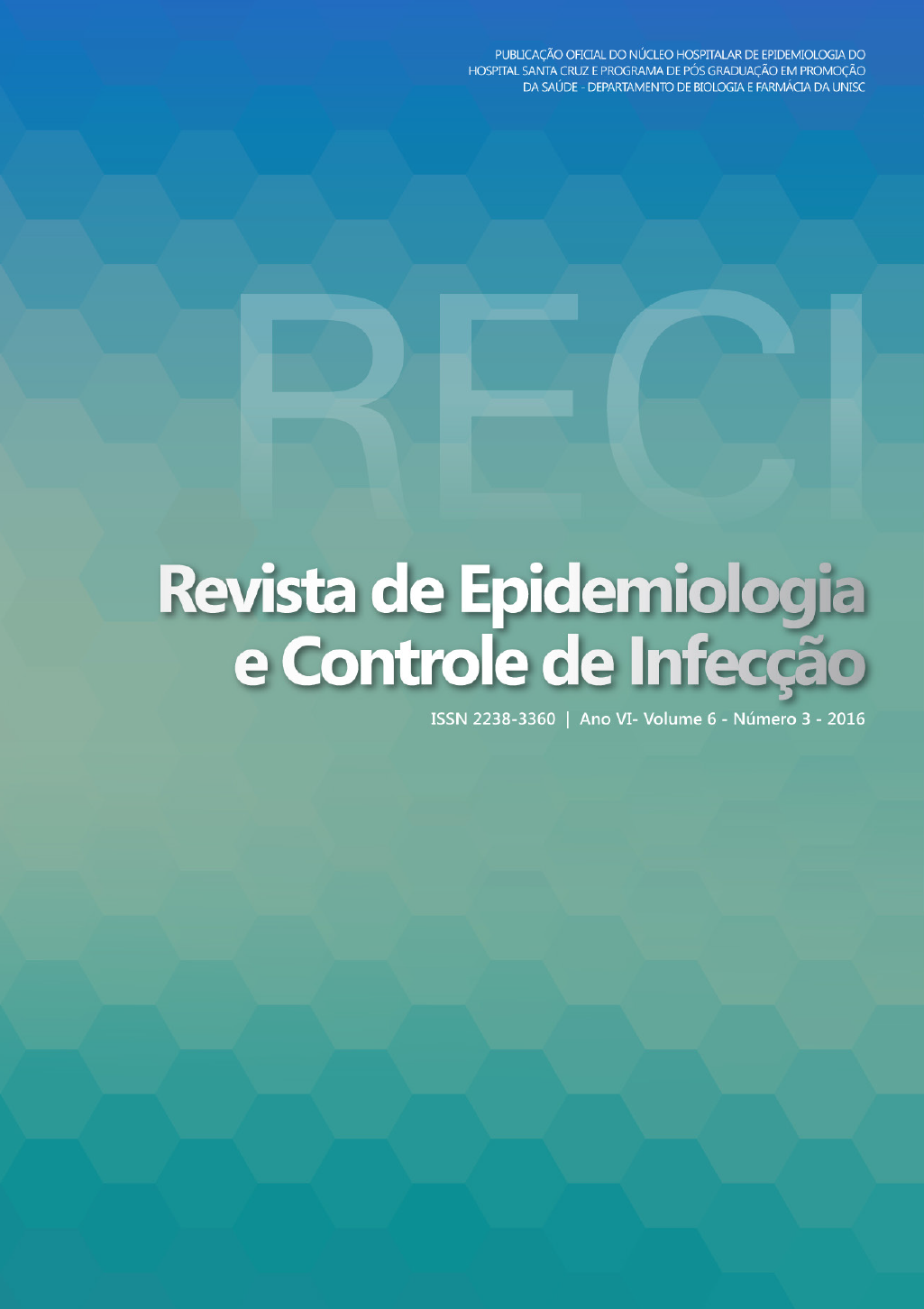Biofilm antifungal susceptibility of Candida urine isolated from ambulatory patients
DOI:
https://doi.org/10.17058/reci.v6i3.6934Abstract
Background and Objectives: the association between the biofilm formations an antifungal resistance has been suggested to be an important factor in the pathogenesis of several Candida species. Besides, studies have included invasive candidiasis from hospitalized patients; however there are few studies that evaluated the species distribution, antifungal susceptibility and biofilm formation of Candida species isolated from ambulatory patients. Thus, the aim of this study was to evaluate whether biofilm producing contributes to antifungal resistance in Candida isolates from urine sample obtained from ambulatory patients. Methods: During one year, 25 urine samples positive for yeast were collected, stored and plated on agar supplemented with chloramphenicol and Sabouread left at room temperature for 5 days for subsequent: 52% (13/25) were C. albicans, 36% (9/25) C. tropicalis, 8% (2/25) C. krusei and 4% (1/25) C. parapsilosis. Results: The ability to form biofilm was detected in 23 (92%) of the yeast studied and 15.4% (2/13) of C. albicans were fluconazole (FLU) and ketoconazole (KET) resistant, while 11.1% (1/9) of C. tropicalis were ketoconazole resistant and were anidulafungin (ANI) non-susceptible. Conclusion: our results showed the high capacity for biofilm formation among Candida isolates from ambulatory patients.Downloads
Downloads
Published
How to Cite
Issue
Section
License
The author must state that the paper is original (has not been published previously), not infringing any copyright or other ownership right involving third parties. Once the paper is submitted, the Journal reserves the right to make normative changes, such as spelling and grammar, in order to maintain the language standard, but respecting the author’s style. The published papers become ownership of RECI, considering that all the opinions expressed by the authors are their responsibility. Because we are an open access journal, we allow free use of articles in educational and scientific applications provided the source is cited under the Creative Commons CC-BY license.


